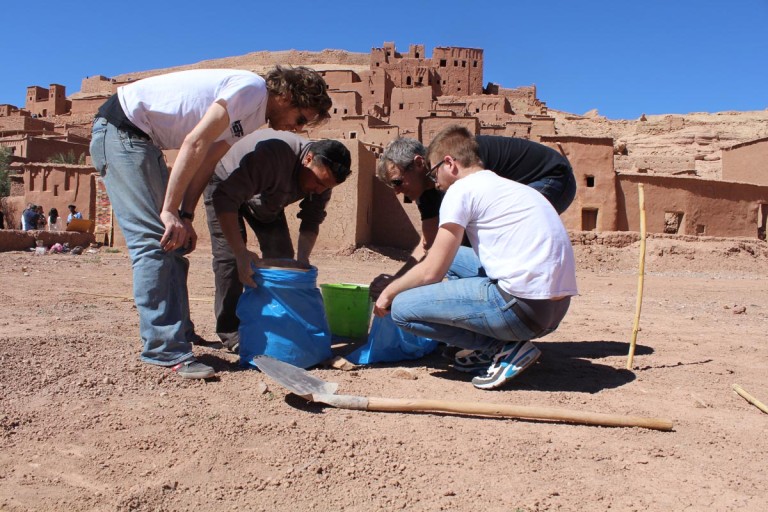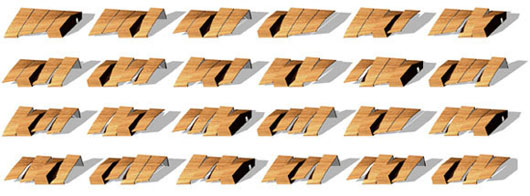
Interview with WASP for 3dprintingarchitecture.net
WASP (World’s Advanced Saving Project) was founded in 2012 by Massimo Moretti. The project focusses on the development of 3D printing by researching materials and 3D print systems, based on the desire to leave behind a better world and on the trust that technology will make this happen. Their aim is to create a 3D printer that can potentially help solving the housing problem of the world by building ‘zero-mile’ homes, using natural materials found in the surrounding areas, which will be low cost and have low environmental impact. This printer should be able to print on-site, therefore it needs to be portable and feature a low energy consumption, in order to be able to use renewable energy sources like sun, wind and water. In its current state of development, the prototype is 6m high but eventually their goal is to reach the 12 meter height with a printing volume of 6 meters in perimeter by 6 meters in height. The projects so far is 100% self-financed, WASP develops and sells in-house 3D printers and invests the revenue into the research and development of the project.
Why 3D printing?
People have been constructing houses with clay for over centuries. Asked what the advantage is of 3D printing over the traditional ways of building houses, using local mud or bricks, Massimo Moretti answered: “The main convenience in printing houses is that you may need a couple of people working instead of a real team. It takes less time than a traditional brick building. You also can print particular shapes which would be more difficult to make by hands”.
Since the strength of 3D printing is the possibility to produce different forms, using a diverse pallet of local, zero-mile materials, one can choose a material and application depending on the context. “3D print can be used to built the full house or just a ready-made complement tailored for any use”. In this sense the usage of this technology is not restricted to a specific context, urban or rural. Material research need to be done in order to explore the full potential of the technology per location.
Printing with local material.
At the moment, WASP’s research focuses on composite printable materials. Their main focus is currently on clay because of the simple fact that earth is available everywhere in the world, it is cheap and easily malleable. Besides clay they are also interested in wood mixtures because of the possibility of using recycled paper and cardboard. Their latest innovation is the use of seeds from certain weeds mixed-in with the 3D printable material to assure that the clay does not shrink as it dries. “The seeds are intended to absorb the clay’s humidity, to then grow and develop their roots into a sort of fully natural embedded ‘armor’”.
Concerning the use of materials, in the press release for the MadeEXPO, Massimo Moretti expresses his personal concern on the potential ‘abuse’ of 3D printing in construction: “3D printing is a technology that offers several advantages. Implementing it with old and polluting materials such as traditional cement could lead to an exponential degeneration: tens of houses could be built in just one day and the potential of 3D printing could be exploited for speculative ends. We need to pay very close attention to the kind of research we want to take forward.”

Prototypes of 3d printed houses, Copyright: WASP
Who is going to use the 3printing technology?
WASP writes on their website: “The power of money and finance is based on the monopoly of production capacity; the WASP project works to make it public, with a perspective of equal opportunities and equal knowledge, to free creativity and boost economy from the bottom.”. In order to find out more about who, in WASP’s view, will truly benefit from this liberation of the ‘production capacity’ I asked them who do they envision will be printing houses in the future? According to WASP “3D printed houses are a real chance for looking-forward artisans that will be able to catch the opportunities of a sector which is still to develop”. Massimo Moretti sees opportunities for small communities and artisans to develop and embrace the technology, producing “new practices and professions that don’t exist yet.”. Thanks to the online sharing of knowledge, the technology is available for everybody. However, to ‘build houses’ is still a complex field though,“architects, material experts, structural engineers and designers will have a key role in 3D print projects.”.
If this new technology will stir up the different roles in the production chain and what the exact role of the architect will be in it, is still to be seen. I guess it all depends on how expeditiously the proffesion is embracing the technology. What do you think?
You can find more information on the WASP website: www.wasproject.it
The Wasp Team researching in Ait Ben Haddou (Morocco).
The newly developed 3D printing extruder.
This post was originally writen for my website http://www.3dprintingarchitecture.net/ which was part of the ongoing research by Erno Langenberg “Even clay wants to be something”, exploring the possibilities of digital manufacturing ceramics in architecture, co-funded by the Creative Industries Fund NL.


